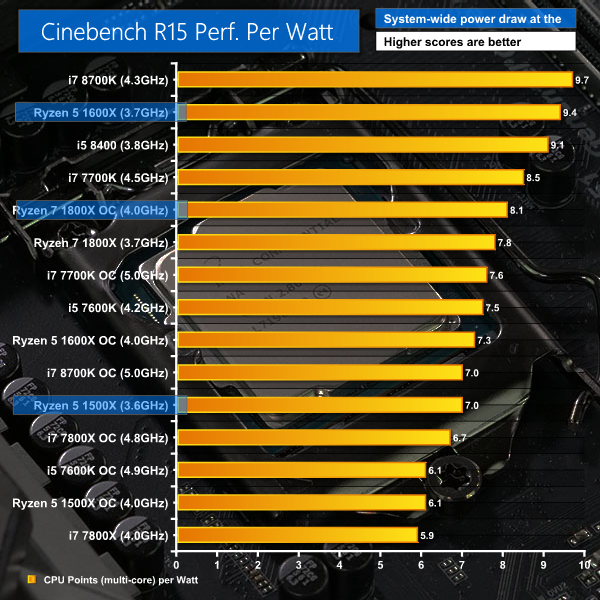goldstone77
Distinguished
juanrga :
8350rocks :
A CPU is not a closed system,
A closed system would require zero external input, same as an isolated system.
No. A closed system is one that interchanges energy with surrounds in the form of heat and work.
https://chem.libretexts.org/Core/Physical_and_Theoretical_Chemistry/Thermodynamics/Fundamentals_of_Thermodynamics/A_System_and_Its_Surroundings
http://mechteacher.com/thermodynamic-system/#closed-system
https://www.khanacademy.org/science/biology/energy-and-enzymes/the-laws-of-thermodynamics/a/the-laws-of-thermodynamics
http://web.mit.edu/16.unified/www/FALL/thermodynamics/notes/node11.html
So a CPU is a closed system. A CPU receives work from the socket and gives heat to the cooler/surrounds.
juanrga :
-Fran- :
juanrga :
AMD finally confirms the real TDP of the R5 2500U used in the Envy x360. The HP laptop is using an APU with a real TDP of 25W, instead the advertised 15W.
So reviews really compared 25W AMD vs 15W Intel, but believed that both chips were 15W.
https://techreport.com/news/32912/amd-confirms-that-the-hp-envy-x360-uses-mobile-xfr
So reviews really compared 25W AMD vs 15W Intel, but believed that both chips were 15W.
That new information significantly affects our analysis of the performance and performance-per-watt characteristics of the Envy x360 versus the 15W implementations of the Core i5-8250U that we tested it against, and I'll be incorporating this information into some updates throughout my original article as quickly as I'm able.
https://techreport.com/news/32912/amd-confirms-that-the-hp-envy-x360-uses-mobile-xfr
I'd like to see consumption numbers though. I'm pretty sure that Intel CPU is not far from the AMD competitor under normal usage. AMD using XFR is akin to Intel using "Turbo 3.0".
Techreport measured power consumption

The huge difference in battery life is now explained because the i5 is a real 15W SoC, whereas the '15W' R5 is nearly the double: 25W.
So, 25W TDP?, and what's Intel's excuse? You are lying to yourself if you think Intel only pulls 15W of power, because they market it at a 15W TDP.Not all notebooks with the AMD Ryzen™ mobile APU will offer the necessary thermal solution to enable the performance upside of mXFR, but the HP ENVY x360 featuring the AMD Ryzen™ Processor with Radeon™ Vega Graphics is the first solution to do so. Users will look for “amplified mXFR performance” in the marketplace should they desire a laptop that offers this capability.

https://www.laptopmag.com/reviews/laptops/hp-envy-x360-15t
Ryan Shrout loves his HP 360X and recommends it as his pick of the week!
Picks of the Week:
1:19:10 Ryan: HP Envy x360 Ryzen 5 If that Intel shill likes it, than it has to be amazing!
https://youtu.be/ou2M5NKO25A?t=4752
Edit: You have clearly never used the piece of garbage HSF that intel sends with it's processors that won't keep their CPU's cool at their rated TDP!







